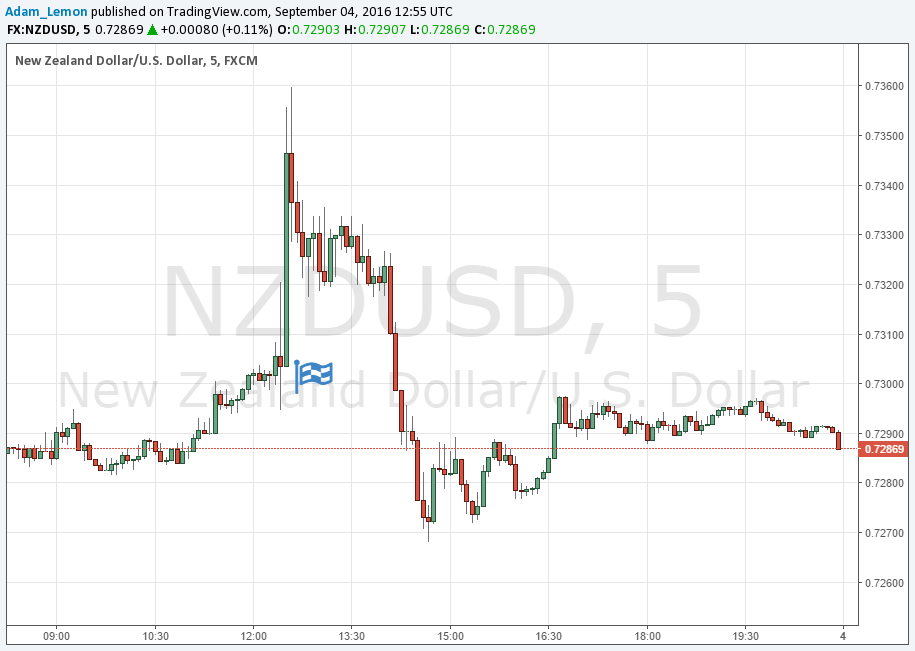The best way to learn how to trade Forex is by looking at real-life examples from the market, so while last Friday is still fresh in our minds, it is worth taking a look at what happened and to relate that to what I wrote in my last posting.
So, the NFP number was released, and it was 151,000 new jobs added as compared to the expected 180,000 – in other worse, it was a significantly worse number. I suggested that if a significantly worse than expected number was released, we could expect the USD to go down by a good amount, and a good pair to trade to exploit a falling USD would be NZD/USD long.
Looking at the NZD/USD currency pair, it went straight up as soon as the number was announced, and within ten minutes of the announcement it had risen by 0.75% in value.
I wrote in my last posting that “Some traders try to enter quickly in the direction it started going just seconds or minutes after the release, but that is usually a very high-risk strategy. It can be better to wait 15 minutes or even up to an hour to see the market digest it, make its move and pull back before continuing.”
What happened? Well, after reaching that peak within ten minutes, it pulled back and instead of rising again continued to fall. It closed the day LOWER that its price just before the announcement was made!
If you had been in a big rush to enter a long trade, you would have lost money. If you had waited to see how the move would play out, you would have probably been kept out of this losing trade.
A 5-minute chart of the action in NZD/USD is shown below. The timing of the announcement is marked by the flag in the chart at the opening of the large green candle:

Trading a major news event like the NFP can seem very attractive, especially when the news release is clearly better or worse than the market’s expectation. However, what happened last Friday shows that sometimes the market does not react the way it “should”. Of course, the price did go up by a fair amount initially, but it turned around and fell and closed lower. So we can say the price did act as expected, but then turned around too quickly to be profitable for a retail Forex trader. Even if you had entered a trade as soon as the announcement was made, you certainly would have got a price very close to the peak, and you would have paid a large spread also, as spreads widen considerably just before and after major news announcements such as the NFP.
There is a final lesson to be learned here: when an asset – the U.S. Dollar in this case – ultimately unexpectedly falls on good news, or rises on bad news, it can be a good indicator of an underlying bullishness or bearishness that gives a hint as to the true condition of the market. This means that as the U.S. Dollar failed to close down on bad news against more or less any other major currency, it suggests that the U.S. Dollar is strong, and will continue to rise next week. It is an old trading saying that true bull markets shrug off bad news.
